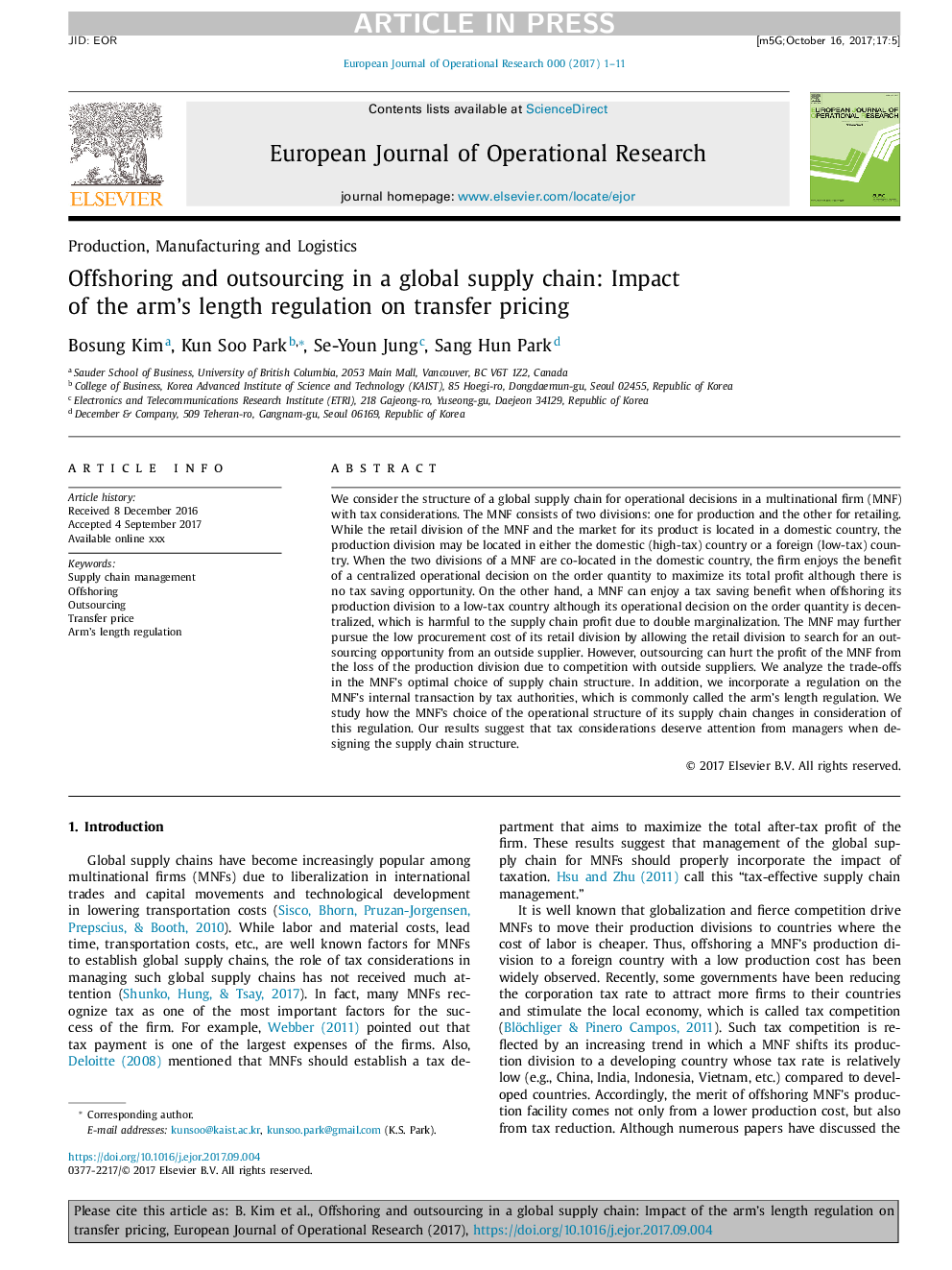| Article ID | Journal | Published Year | Pages | File Type |
|---|---|---|---|---|
| 6895204 | European Journal of Operational Research | 2018 | 11 Pages |
Abstract
We consider the structure of a global supply chain for operational decisions in a multinational firm (MNF) with tax considerations. The MNF consists of two divisions: one for production and the other for retailing. While the retail division of the MNF and the market for its product is located in a domestic country, the production division may be located in either the domestic (high-tax) country or a foreign (low-tax) country. When the two divisions of a MNF are co-located in the domestic country, the firm enjoys the benefit of a centralized operational decision on the order quantity to maximize its total profit although there is no tax saving opportunity. On the other hand, a MNF can enjoy a tax saving benefit when offshoring its production division to a low-tax country although its operational decision on the order quantity is decentralized, which is harmful to the supply chain profit due to double marginalization. The MNF may further pursue the low procurement cost of its retail division by allowing the retail division to search for an outsourcing opportunity from an outside supplier. However, outsourcing can hurt the profit of the MNF from the loss of the production division due to competition with outside suppliers. We analyze the trade-offs in the MNF's optimal choice of supply chain structure. In addition, we incorporate a regulation on the MNF's internal transaction by tax authorities, which is commonly called the arm's length regulation. We study how the MNF's choice of the operational structure of its supply chain changes in consideration of this regulation. Our results suggest that tax considerations deserve attention from managers when designing the supply chain structure.
Related Topics
Physical Sciences and Engineering
Computer Science
Computer Science (General)
Authors
Bosung Kim, Kun Soo Park, Se-Youn Jung, Sang Hun Park,
